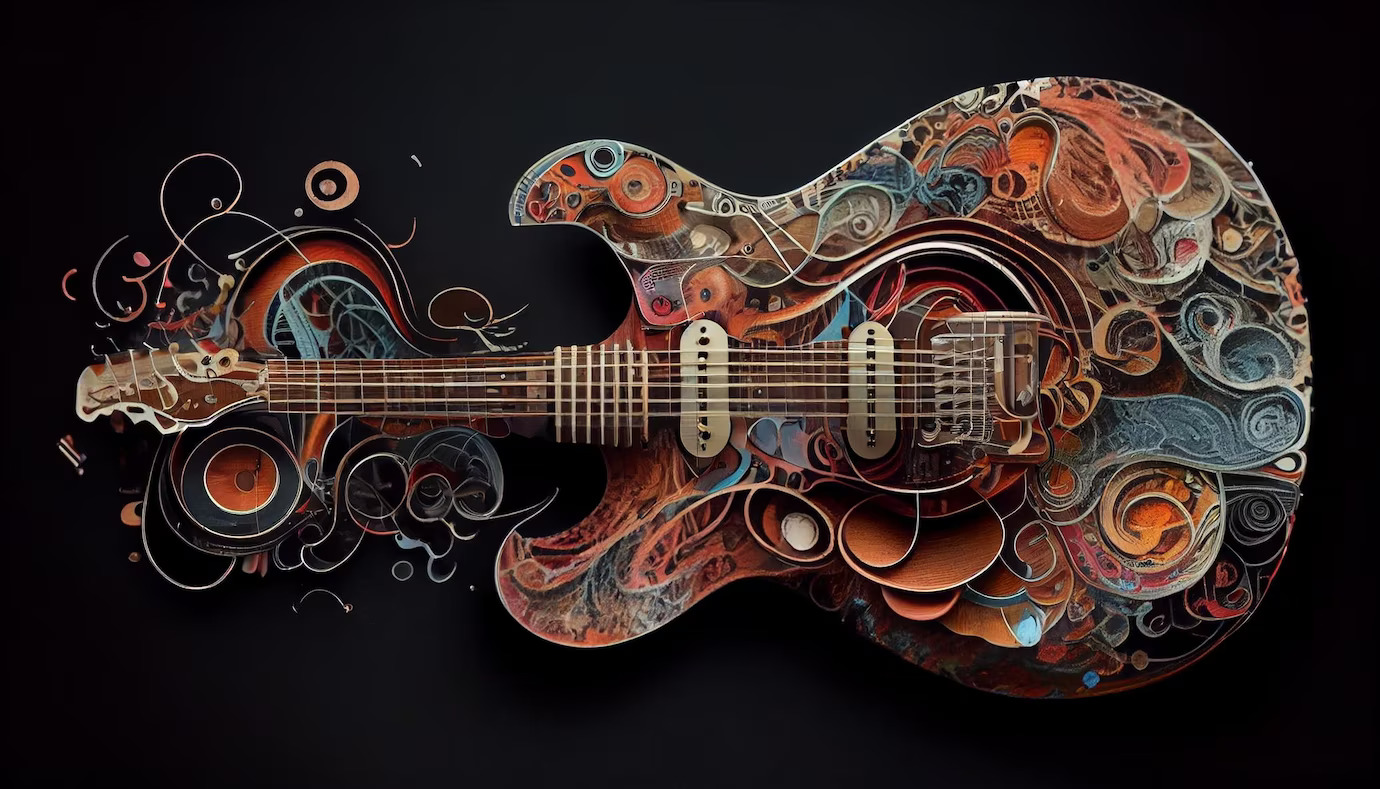How to Read Guitar Tabs: Unlocking the Language of Music
When it comes to playing the guitar, reading sheet music is not the only way to go. Guitar tabs, short for tablature, offer a more accessible and straightforward method for guitarists to learn and play their favorite songs. In this article, we’ll delve into the world of guitar tabs, breaking down the basics and providing you with the skills you need to read guitar tabs like a pro.
If you want to master the B Minor chord on the guitar, click here: B Minor Chord Guitar.
Understanding Guitar Tabs

What Are Guitar Tabs?
Guitar tabs, short for tablature, serve as a universal notation system for guitarists. Unlike traditional sheet music, which employs musical notes, guitar tabs employ a simpler visual representation. They consist of six lines, with each line representing one of the guitar strings. The top line corresponds to the high E string, while the bottom line represents the low E string.
Components of Guitar Tabs
- Strings: Each line on a guitar tab represents one of the six strings on the guitar. These strings are, from top to bottom: high E, B, G, D, A, and low E. This visual representation helps you determine which strings to play.
- Numbers: Numbers on the lines indicate which fret you should press down on and play. For example, if you see the number “3” on the low E string, it means you should press down on the third fret of that string. This numerical system simplifies the process of finding the right notes on the fretboard.
- Symbols: In addition to numbers, guitar tabs often include symbols to provide additional instructions on how to play a note. For instance:
- “h” represents a hammer-on, where you use your fretting hand to tap a higher fret.
- “p” indicates a pull-off, a technique where you pull your finger off a fret to produce a lower note.
- “/” represents a slide, where you move your finger smoothly along the string to transition between two notes.
Understanding these symbols is crucial for adding depth and expression to your guitar playing.
By grasping these fundamental components of guitar tabs, you gain a solid foundation for interpreting and playing music accurately. Whether you’re a beginner or an experienced guitarist, mastering the language of guitar tabs will empower you to learn and perform a wide variety of songs with confidence and precision.
Getting Started
Reading Basic Notes
Start by practicing reading basic notes on the guitar tabs. Play each note as indicated, paying attention to the string and fret number. This fundamental skill forms the building blocks of guitar tab interpretation.
Chords in Tabs
Guitar tabs can also represent chords. Instead of single notes, you’ll see numbers stacked vertically, indicating which strings and frets to press down to form a chord. Practice reading and transitioning between chord diagrams in tabs.
Rhythm and Timing
While tabs provide information about which notes to play, they don’t convey rhythm and timing. It’s essential to listen to the song and develop a sense of timing to play accurately.
Advanced Techniques
Bends and Vibrato
Advanced guitar tab notation includes bends and vibrato, which add expression and emotion to your playing. “B” indicates a bend, and “~” denotes vibrato. These techniques require practice to master.
Slides and Hammer-ons/Pull-offs
Experiment with slides, hammer-ons, and pull-offs to make your playing more dynamic. “/” represents a slide, while “h” and “p” are used for hammer-ons and pull-offs, respectively.
Tips for Mastery
Start Simple
When embarking on your journey to master guitar tabs, it’s wise to begin with straightforward songs and tabs. These might include popular tunes with uncomplicated melodies or basic chord progressions. Starting simple allows you to build your skills progressively. As you become more comfortable with reading tabs, you can gradually tackle more complex pieces.
Use a Metronome
A metronome is a valuable tool for any guitarist, especially when learning to read tabs. It helps you develop a strong sense of timing and rhythm, which are crucial elements of playing music accurately. Set your metronome to a comfortable tempo and practice playing along with it. As your skills improve, you can gradually increase the tempo to challenge yourself further.
Practice Regularly
Consistency is the key to mastering any skill, and reading guitar tabs is no exception. Dedicate regular practice sessions to reading tabs and playing along with songs. Whether it’s 15 minutes a day or an hour a week, establishing a routine will help reinforce your skills and build muscle memory. Over time, you’ll notice significant improvement in your tab-reading abilities.
Learn Music Theory
While guitar tabs are an excellent way to get started, understanding some music theory can enhance your overall comprehension. Familiarize yourself with concepts like scales, intervals, and chord progressions. This knowledge will help you make sense of the notes and chords you encounter in tabs, enabling you to explore music more deeply and even compose your music.
Seek Guidance
Don’t hesitate to seek guidance from more experienced guitarists or instructors. They can provide valuable tips, correct any mistakes in your technique, and offer suggestions for improving your tab-reading skills. Online communities and forums dedicated to guitarists are also great places to ask questions and share your progress.
Patience and Persistence
Learning to read guitar tabs is a skill that takes time to develop. Be patient with yourself and avoid getting discouraged if you encounter challenges along the way. Persistence and a positive mindset are essential. Celebrate your small victories and milestones, and keep pushing forward.
Conclusion
In conclusion, mastering the art of reading guitar tabs opens up a world of musical possibilities. It allows you to play your favorite songs, compose your music, and connect with the language of music in a unique way. Remember, as with any skill, practice makes perfect. Keep honing your tab-reading skills, stay dedicated to your musical journey, and soon you’ll be strumming your favorite tunes with confidence and finesse. Whether you’re a beginner or an experienced guitarist, the ability to interpret and play music through tabs is a valuable skill that will continue to enrich your musical experience. Keep the passion alive and let your guitar be your voice in the world of music.


















